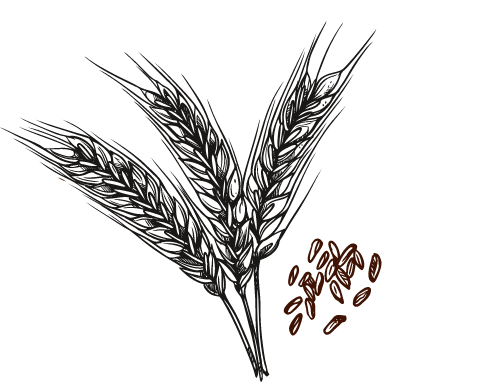
By reconnecting them to their sensations, including satiety, intuitive eating aims to help its followers make peace with their bodies and with food. This is a simple and natural approach, unlike dieting, to relearn to listen to one’s hunger and to eat freely.
What is intuitive eating ?
Intuitive eating encourages you to listen to your body as you eat. This was a largely forgotten philosophy in the era of restrictive diets; it was brought up to date by two American nutritionists in a book published in 1995: “Intuitive Eating: A Revolutionary Program That Works”. Re-issued three times within 20 years, the programme in question still arouses the same enthusiasm, reinforced by the current trend towards the rejection of restrictive diets, accused of many evils.
The pillars of intuitive eating
Intuitive eating takes a stance opposite to that of conflictual relations with food maintained by decades of restrictions. It is therefore a question of abandoning all the reflexes of traditional diets that foster false hopes and encourage splurging or guilt: no more counting calories, no more cataloguing food as good or bad, and above all no depriving oneself when hunger is felt.
On the contrary, intuitive eating is about relearning to listen to your body like a child. The aim is to recognise hunger and honour it and then identify satiety and respect it. But this doesn’t mean you should give in to all snacking cravings! Learning to listen to yourself also means learning to distinguish physical hunger from emotional hunger – the desire to eat triggered by emotions – in order to satisfy it through other comforting activities. As time goes by, your relationship with food becomes healthier, you rediscover the pleasure of eating, and you develop a relationship with your body based on kindness.
How to adopt intuitive eating ?
Practising intuitive eating means taking time to listen to your hunger, identifying the desire it is hiding and honouring it, either by eating slowly and with enjoyment or by engaging in a comforting activity. This may mean stopping in the middle of meals to ask yourself the question, going for a walk instead of eating, or not finishing a dish if you feel full!
At the same time, exercise is essential, whatever it may be. The aim is to relax rather than to burn calories, and the same balance should take precedence for the rest: you should favour a healthy lifestyle and diet, but without excessive obsession. Want a useful tip? Try combining intuitive and mindful eating, which are two complementary methods.
Who should practise intuitive eating ?
Intuitive eating does not fit all profiles. For those who are rooted in restrictive habits, the change can be dizzying, at least without support, and for people with eating disorders, this approach is even discouraged. Knowing how to listen to yourself requires self-knowledge, self-confidence and some degree of prior nutritional balance. Another key consideration is that intuitive eating is not a diet.
The method aims to restore a healthy relationship with food and with yourself, the goal is not to lose weight. And while following your intuition can lead to weight loss, it will never go beyond a balanced body weight, which is rarely sufficient for those who follow restrictive diets.








